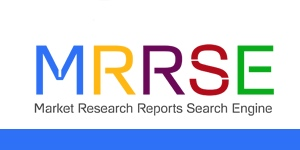Immunoglobulins are unique biologic medicines that can be either infused or injected to treat rare, life-threatening, chronic, and genetic diseases. These diseases include bleeding disorders, immune deficiencies, pulmonary disorders, neurological disorders, and infectious diseases such as tetanus, hepatitis, and rabies. Factors such as growing use of immunoglobulins in primary immunodeficiency disorders and widespread opportunities for immunoglobulins in the treatment of secondary immunodeficiency diseases such as AIDS are responsible for growth of the subcutaneous immunoglobulin market. Better access to medicines in emerging markets due to increasing government support, increase in new indications in the geriatric population, and the development of new plasma-derived formulations are likely to drive the subcutaneous immunoglobulin market.
Market Research Reports Search Engine (MRRSE) estimates that the subcutaneous immunoglobulin market will expand at a CAGR of 14.0% over the forecast period between 2016 and 2024. Escalating at this pace, the market, which had a valuation of US$2,762.2 Mn in 2015 in terms of revenue, is projected to rise to US$8,831.3 Mn by 2024.
Click here For Free Sample Report @ https://www.mrrse.com/sample/3381
PIDDs to Dominate Demand from Subcutaneous Immunoglobulin Market
The subcutaneous immunoglobulin market has been assessed in terms of application and end user. In terms of application, the subcutaneous immunoglobulin market is categorized into primary immunodeficiency diseases, secondary immunodeficiency diseases, and others. In terms of revenue, primary immunodeficiency diseases held the largest share in 2015 and are projected to dominate the market during the forecast period. Primary immunodeficiency diseases held a share of 68.9% in 2015. The dominance of the segment can be attributed to the rising prevalence of primary immunodeficiency diseases (PIDDs), growing indication of subcutaneous immunoglobulin, and rising research and development activities in the field of plasma derived therapeutics.
In terms of end users, the subcutaneous immunoglobulin market is segmented into hospitals, home care, and clinics. The home care segment is expected to gather significant revenue during the forecast period from 2016 to 2024. Subcutaneous infusion of immunoglobulin is rapidly gaining preference over intravenous route of administration. SCIG can be self-administered once a patient has been trained by a health care professional. Immunoglobulin administration through subcutaneous route has demonstrated to be equally therapeutically effective in preventing infections and has considerably low risk. Home care accounted for US$1.7 bn in the global subcutaneous immunoglobulin market in 2015 and is likely to remain a leading contributor over the 2016-2024 forecast period.
Outlook Complete Report With Table of Content @ https://www.mrrse.com/subcutaneous-immunoglobulin-market
North America Likely to Dominate due to Widespread Support for Healthcare Technology Upgrades
Geographically, subcutaneous immunoglobulin market has been segmented into five major regions: North America, Europe, Asia Pacific, Latin America, and the Middle East and Africa. North America dominated the subcutaneous immunoglobulin market in terms of revenue in 2015 and is projected to retain its dominant position during the forecast period from 2016 to 2024. Usage of immunoglobulins is high in North America primarily due to steady approval for new indications and research undertakings, and increasing geriatric population. According to the Immune Deficiency Foundation, currently around 55,000 people in the U.S. with antibody deficiency receive PIDD treatment in the form of intravenous immunoglobulin. Expected launch of immunoglobulins that are presently in clinical trials in the U.S. during the forecast period is likely to boost market growth.
Check Discount @ https://www.mrrse.com/checkdiscount/3381
Hi! I am a robot. I just upvoted you! I found similar content that readers might be interested in:
https://www.transparencymarketresearch.com/subcutaneous-immunoglobulin-market.html
Downvoting a post can decrease pending rewards and make it less visible. Common reasons:
Submit